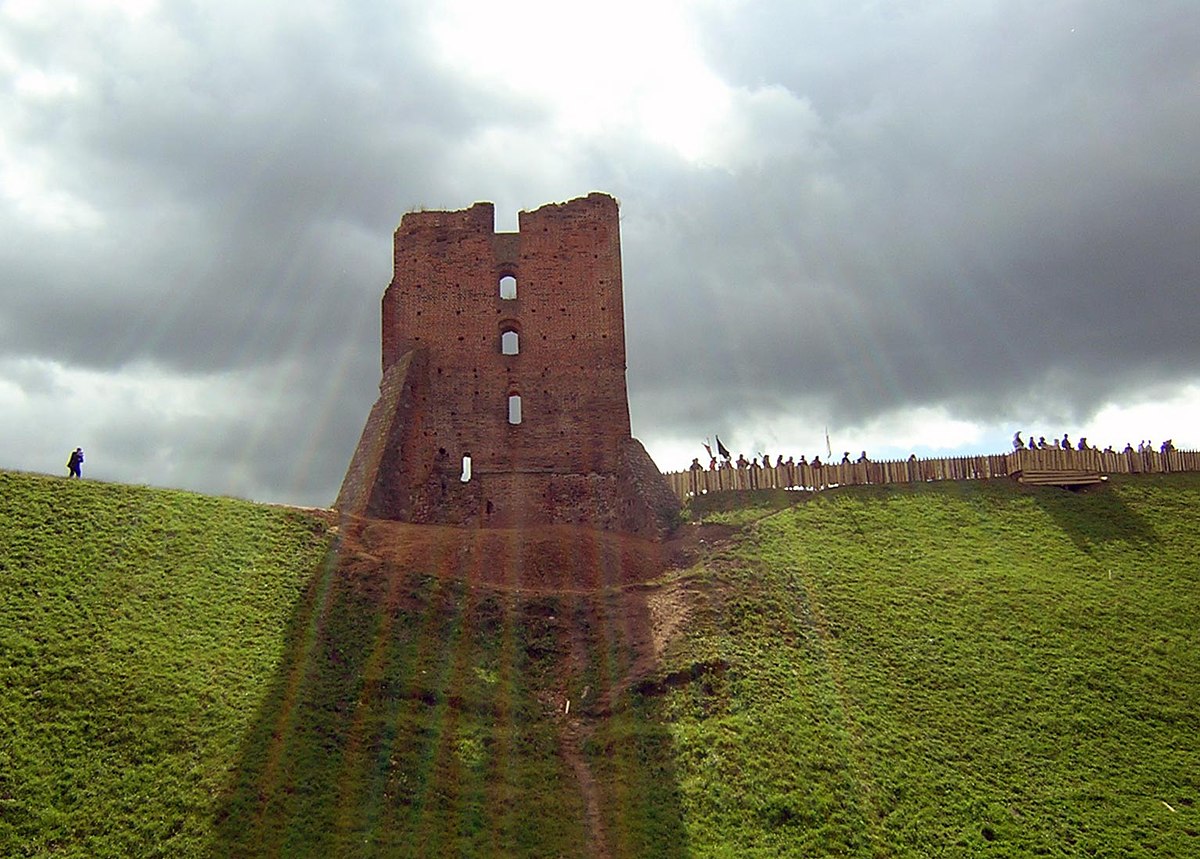
From David Black

Navarudak KehilaLink
JewishGen – The Home of Jewish Genealogy
JewishGen – The Home of Jewish Genealogy


From David Black

Navarudak KehilaLink


Navahrudak (Belarusian: Навагрудак), more commonly known by its Russian name Novogrudok (Новогрудок) (Lithuanian: Naugardukas; Polish: Nowogródek; Yiddish: נאָווהאַרדאָק Novhardok) is a city in the Grodno Region of Belarus. In the 14th century it was an episcopal see of the Metropolitanate of Lithuania. It is a possible first capital of the Grand Duchy of Lithuania, with Trakai also noted as a possibility. It was later part of the Polish-Lithuanian Commonwealth, the Russian Empire and eventually Poland until the Soviet invasion of Poland in 1939 when the Soviet Union annexed the area to the Byelorussian SSR.
Source: en.wikipedia.org/wiki/Navahrudak






With Mike Silver of NY and his guide Alexander (centre)








The former castle in Navahrudak, Belarus (Belarusian: Навагрудскі замак, Lithuanian: Naugarduko pilis, Polish: Zamek w Nowogródku) was one of the key strongholds of the Grand Duchy of Lithuania, cited by Maciej Stryjkowski as the location of Mindaugas’s coronation as King of Lithuania as well as his likely burial place.[1][2][3][4] Modern historians cannot make up their minds as to the true location of Mindaugas’s coronation.
Source: en.wikipedia.org/wiki/Navahrudak_Castle
















Adam Bernard Mickiewicz ([mit͡sˈkʲɛvit͡ʂ] ( listen); 24 December 1798 – 26 November 1855) was a Polish poet, dramatist, essayist, publicist, translator, professor of Slavic literature, and political activist. He is regarded as national poet in Poland, Lithuania and Belarus. A principal figure in Polish Romanticism, he is counted as one of Poland’s “Three Bards” (“Trzej Wieszcze”)[1] and is widely regarded as Poland’s greatest poet.[2][3][4] He is also considered one of the greatest Slavic[5] and European[6] poets and has been dubbed a “Slavic bard”.[7] A leading Romantic dramatist,[8] he has been compared in Poland and Europe to Byron and Goethe.[7][8]






Navahrudak (Belarusian: Навагрудак), more commonly known by its Russian name Novogrudok (Новогрудок) (Lithuanian: Naugardukas; Polish: Nowogródek; Yiddish: נאָווהאַרדאָק Novhardok) is a city in the Grodno Region of Belarus. In the 14th century it was an episcopal see of the Metropolitanate of Lithuania. It is a possible first capital of the Grand Duchy of Lithuania, with Trakai also noted as a possibility. It was later part of the Polish-Lithuanian Commonwealth, the Russian Empire and eventually Poland until the Soviet invasion of Poland in 1939 when the Soviet Union annexed the area to the Byelorussian SSR.
Source: en.wikipedia.org/wiki/Navahrudak






With Mike Silver of NY and his guide Alexander (centre)








The former castle in Navahrudak, Belarus (Belarusian: Навагрудскі замак, Lithuanian: Naugarduko pilis, Polish: Zamek w Nowogródku) was one of the key strongholds of the Grand Duchy of Lithuania, cited by Maciej Stryjkowski as the location of Mindaugas’s coronation as King of Lithuania as well as his likely burial place.[1][2][3][4] Modern historians cannot make up their minds as to the true location of Mindaugas’s coronation.
Source: en.wikipedia.org/wiki/Navahrudak_Castle
















Adam Bernard Mickiewicz ([mit͡sˈkʲɛvit͡ʂ] ( listen); 24 December 1798 – 26 November 1855) was a Polish poet, dramatist, essayist, publicist, translator, professor of Slavic literature, and political activist. He is regarded as national poet in Poland, Lithuania and Belarus. A principal figure in Polish Romanticism, he is counted as one of Poland’s “Three Bards” (“Trzej Wieszcze”)[1] and is widely regarded as Poland’s greatest poet.[2][3][4] He is also considered one of the greatest Slavic[5] and European[6] poets and has been dubbed a “Slavic bard”.[7] A leading Romantic dramatist,[8] he has been compared in Poland and Europe to Byron and Goethe.[7][8]







The IAJGS International Jewish Cemetery Project mission is to catalogue every Jewish burial site throughout the world. Every Jewish cemetery or burial site we know of is listed here by town or city, country, and geographic region is based on current locality designation.
Source: www.iajgsjewishcemeteryproject.org/belarus/navahrudak.html








Source: kehilalinks.jewishgen.org/navahrudak/Home.html
First Site









Second site 


Third site






WWII
Soviet troops entered the city in 18 September 1939 and it was annexed into the Soviet Union via the Byelorussian SSR. The Polish inhabitants were exiled, mostly to Siberia and the Soviet Union, as prisoners. In the administrative division of the new territories, the city was briefly (from 2 November to 4 December) the centre of the Navahrudak Voblast. Afterwards the administrative centre moved to Baranavichy and name of voblast was renamed as Baranavichy Voblast, the city became the centre of the Navahrudak Raion (15 January 1940). On 22 June 1941 Nazi Germany invaded the USSR and Navahrudak was occupied on 4 July, following one of the more tragic events when the Red Army was surrounded in what’s known as the Novogrudok Cauldron. See Operation Barbarossa: Phase 1.
During the German occupation it became part of the Reichskommissariat Ostland territory. Partisan resistance immediately began. The Bielski partisans made of Jewish volunteers operated in the region. On 1 August 1943, Nazi troops shot down eleven nuns, the Martyrs of Nowogródek. The Red Army reoccupied the city almost exactly three years after its German occupation on 8 July 1944. During the war more than 45,000 people were killed in the city and in the surrounding area, and over 60% of housing was destroyed.
Navahrudak was an important Jewish center and shtetl. It was home to the Novardok yeshiva, led by Rabbi Yosef Yozel Horwitz, as well as the hometown of Rabbi Yechiel Michel Epstein and of the Harkavy Jewish family, including Yiddish lexicograph Alexander Harkavy. Before the war, the population was 20,000, of which about half were Jewish; Meyer Meyerovitz and Meyer Abovitz were the Rabbis there at that time. During a series of “actions” in 1941, the Germans killed all but 550 of the approximately 10,000 Jews. (The first mass murder of Navahrudak’s Jews occurred in December 1941.) Those not killed were sent into slave labor.[3]